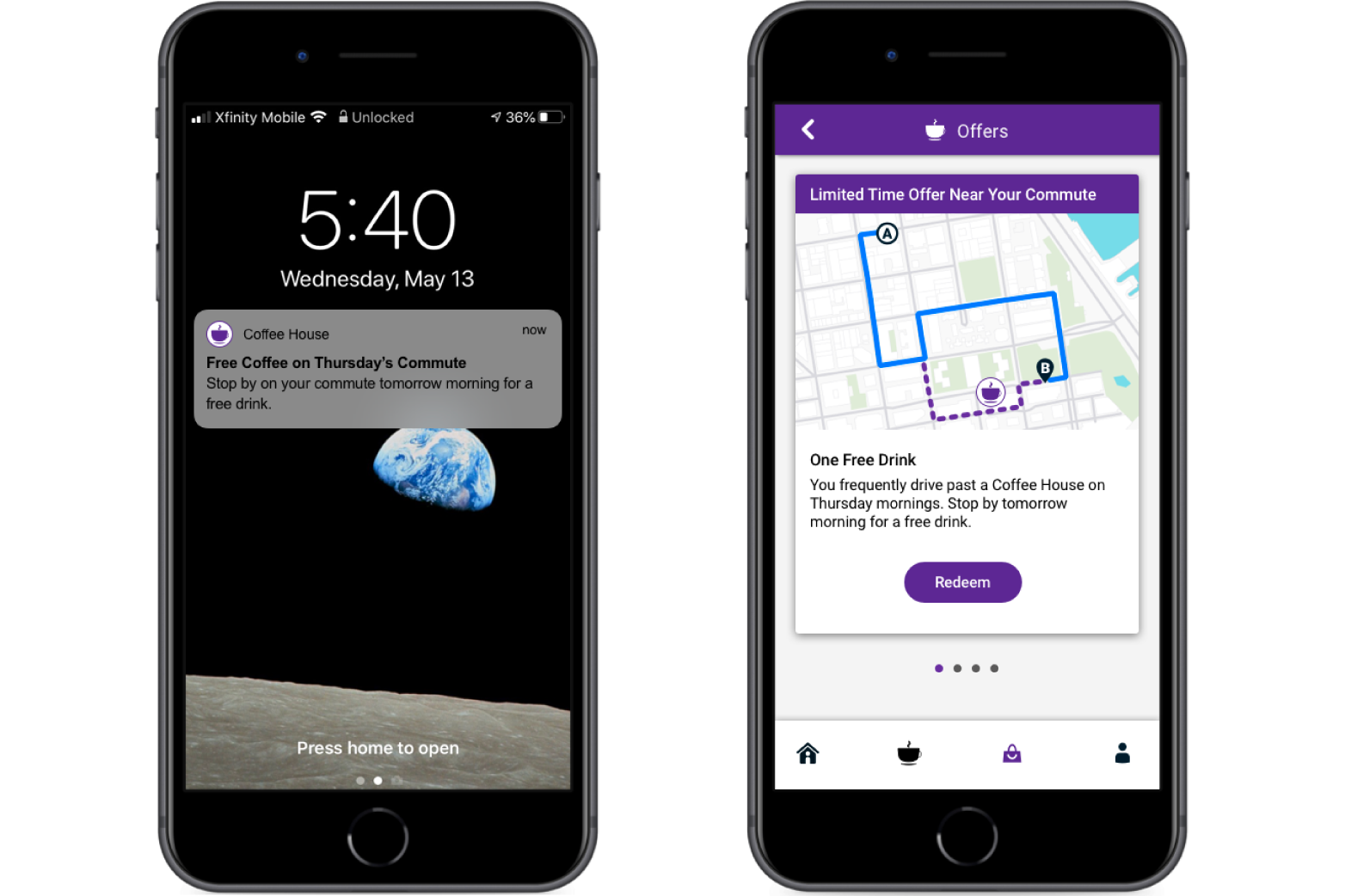Traffic takeaways: The Baltimore bridge collapse Read article


This article is the second in a series about leveraging predictive mobility data to provide meaningful value within mobile apps. This article focuses on apps for quick service and fast-casual dining apps.
Now more than ever, people want to avoid lines or waiting in a crowd for food orders to be completed, and fast food and fast-casual dining apps have stepped up to provide a convenient solution.
Quick service restaurant (QSR) apps can be an attractive source of food and beverage deals and limited time promotions, and often provide their dedicated consumer’s rewards for their loyalty.
These benefits can be greatly enhanced when people turn on location and notification preferences in the app. But how often do they? At Arity, we were committed to finding out.
A recent Arity study shows that over 70% of quick-service and fast-casual dining restaurant app users are comfortable sharing their location in order to find a restaurant or cafe near them. Of the remaining 29%, some would share their location, but only while using the app, and others have privacy concerns around turning it on at all.
When it comes to receiving app notifications, however, 57% of the study participants noted that they don’t want to be sold to and they find push notifications annoying. The other 43% were interested in hearing about new menu items and deals and would allow notifications.
Why do consumers use a QSR or casual dining app in the first place? Most of our study participants, who were between the ages of 23 and 56 and used restaurant apps frequently, noted that ordering ahead for pickup was their top reason for engaging with the app. A close second was paying within the app. This is what you might expect.
In addition to ordering ahead, 57% of respondents said they enjoyed choosing food items and cashing in or accumulating rewards and deals from the app. What’s more, they didn’t feel the need to delete the app after using it. This is a nice affirmation for mobile app publishers.
When we asked app users, “If your QSR app knows you take a frequent route near a restaurant at certain days and times of the week, would you be interested in receiving an offer when it knows you’ll be near?” The vast majority — 71% — said this idea resonated with them.
They liked the convenience and always appreciate a deal. A minority of respondents were either worried about too many notifications becoming annoying or wouldn’t deviate from their established route while they were out.
Speaking of convenience, we also asked whether participants would appreciate a notification from an app asking whether they’d like to place an order for pickup when the app knew the customer was nearby. This option wasn’t as popular as the first use case, but still, more than half said they’d find this convenient. The others needed more of an incentive as it was already easy to place an order whenever they wanted.
It’s already been known that by leveraging a drivers’ or passengers’ location, fast-casual restaurants can provide more value to their consumers, but through research and data we’ve found that it is much more welcomed and in fact recommended to use this info to provide more meaningful value.
What are our key takeaways for QSR and fast-casual dining app publishers?
Today’s restaurant app users are using these apps regularly, and the vast majority feel comfortable allowing location and notification permissions, especially when there’s a clear benefit to doing so.
At Arity, we recommend that QSR/fast-casual dining app publishers:

With Arity’s mobility data, restaurant app publishers can provide the convenience and incentives their customers want by alerting them to deals based on their location and activities. Considering that more than 70% of our research respondents were excited about the idea of getting food deals from restaurants nearby, wherever they might be, this value add could be more than a tasty treat for consumers and publishers alike.
To find out how to get started layering predictive mobility data into your restaurant app, contact us today.
Need another example of predictive mobility data in action? Read the third article in this series, which is about leveraging app users’ driving data to provide meaningful value within a fitness app.